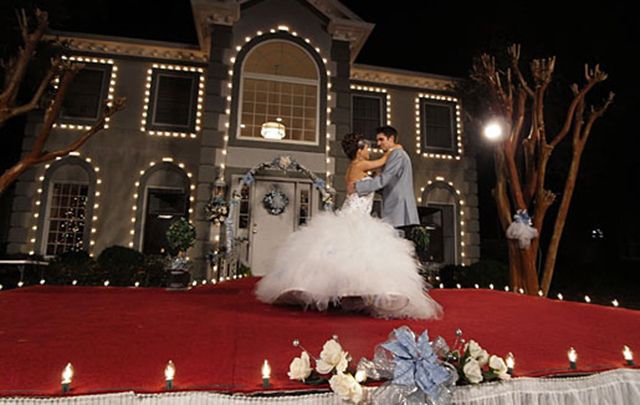One of Ireland's oldest and most marginalized minorities but how much to do you know about Irish Travellers in America?
In Ireland, nearly everybody is aware of the existence of the Irish Travellers — they’re one of Ireland’s oldest and most marginalized minority groups, known for their itinerant lifestyle, distinct dialects and oft-questioned traditions.
However, many people know that there are also communities of Irish Travellers in America.
A few times each year, a headline will pop up about Irish Travellers in the US. Sometimes it’ll be from a local newspaper in South Carolina or Texas; on rarer occasions, such as the bust of a high-profile rhinoceros horn smuggling ring, it’ll be in Bloomberg Businessweek. Except for the occasional story expressing interest in the culture or history of the Travellers, the articles are typically from the crime section — detailing a theft or scam, or local concern that the Travellers have arrived in the area.
But if you don’t happen to live in those areas or catch those headlines, and if you missed out on that one famous episode of "My Big Fat Gypsy Wedding," you’d be easily forgiven for not having any idea that the Irish Travellers have lived in the US for generations. They’re not recognized as a distinct ethnic group by the US Census, and, what’s more, Irish Americans have never claimed them under the umbrella of the Irish diaspora.
What little we do know about the Irish Travellers here in America comes from those very news articles, and from a scant number of books and documentaries.
There are believed to be anywhere from 7,000 to 40,000 Irish Travellers in the US, though most estimates lie closer to the 10,000 mark. The Travellers here descended from groups who left Ireland around the time of the Great Hunger and settled in the US, carving out a similar lifestyle to the one they followed in Ireland.
Like their counterparts in Ireland, Irish Travellers in the US speak their own dialects of Cant, Shelta, or Gammon, which can include elements of Irish, Gaelic, English, Greek, and Hebrew.
Also similar to their Ireland-based counterparts, the American Irish Travellers identify as strictly Catholic and adhere to their own traditions and mores. The men travel and work and the women raise the children. Many of the women are promised to their future husbands in arranged marriages when they are very young.
Their primary trade is repair work, often categorized as dubious in nature (though the fairness of that generalization has been called into question). But the US Irish Travellers have also, over the years, amassed fortunes through a unique internal economy based on life insurance policies.
As Paul Connolly, who made a documentary about Irish Travellers in the US for the Irish channel TV3 in 2013, told The Journal: “Most of the income comes from insurance. . . In America, there’s a clause which allows you to insure anyone with a blood connection — and as they have intermarried for generations, there’s a likelihood there will be a blood connection.
"So they’ve worked out a way of profiting from this, and that, according to the Travellers I’ve spoken to, is how they make their money and how they’re so wealthy. Some of the more morbid characters we came across referred to it as ‘Death Watch’.”
Perhaps the most notorious instance of this system gone awry took place in 2015, when Anita Fox, a 69-year-old Irish Traveller woman in Texas, was found stabbed to death. Police later identified the perpetrators as Gerard and Bernard Gorman, who held a $1 million life insurance policy in Fox’s name.
There are Irish Traveller enclaves in Texas, in the Houston and Fort Worth areas, as well as in South Carolina, Tennessee, Georgia, Arkansas, Mississippi, and Florida, with smaller settlements found in rural New York, New Jersey, Pennsylvania, and Delaware. Many of the groups identify based on where in the US their ancestors first based themselves, such as the Ohio Travellers, Georgia Travellers, Texas Travellers, and Mississippi Travellers.
The largest-known Irish Traveller community in the US is in Murphy Village, South Carolina, which, as noted in a report by the Florida Ancient Order of Hibernians, is home to approximately 1,500 people with only 11 different surnames.
According to a 2002 article in the Washington Post, “The Irish Travelers who settled in the United States in the 19th century migrated to different parts of the country and established their own clan groups, often with little intermingling across regions.
“The Sherlocks, O'Haras and others settled [in Murphy Village] in the 1960s, on land around a Catholic church whose pastor, the Rev. Joseph Murphy, became the patron and namesake of the growing community just outside the town of North Augusta.”
Far from a caravan or mobile home community, Murphy Village has become home to an increasing number of suburban “McMansions” in recent decades, as the US Irish Travellers build permanent homes, which they use as a base between travels and for holidays. In this regard, its closest Irish counterpart is Rathkeale, Co. Limerick, which was the subject of a New York Times story in 2012, chronicling the massive homecoming that takes place every Christmas.
“The Riches,” a serial drama about a contemporary Irish Traveller family in the US, starring Eddie Izzard and Minnie Driver, aired on FX for two seasons, in 2007 and 2008.
H/T Slate, The Journal, The Washington Post, Florida AOH.
* Originally published in Sept 2016.




Comments